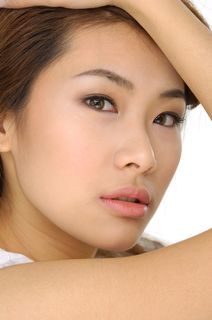Asian Eyelid Surgery

Traditional upper eyelid surgery, or blepharoplasty, is a procedure which rejuvenates the eyes by removing excess skin and fat. This provides a fresher, more youthful and energetic appearance to the eyes. Asian eyelid surgery, or Asian blepharoplasty, on the other hand, is frequently performed in young adults who desire a fold in the upper eyelid.
This fold produces the “double eyelid,” which makes the eyes appear larger and is considered an aesthetic ideal in many Asian cultures. For most of the twentieth century, Western surgeons falsely believed that Asians seeking these surgeries desired “Westernization” of their eyelids. This is patently untrue – nearly half of all Asians are born with eyelid folds, and the height and shape of these folds are distinct from those with Caucasian eyelids. For example, the crease in Asian eyelids is usually closer to the eyelashes and the upper eyelids are generally fuller when compared to their Western counterparts. Because of the misconception that Asians desired Caucasian eyelids, early surgeries resulted in abnormally high creases and a hollowed-out appearance.
So what is most desirable in the Asian eyelid? For those born without the double eyelid, the eyes often appear heavily hooded. This is modified with a cosmetic procedure. Depending on the exact cause of the eyelid hooding or the lack of a crease, different techniques may be used to form a double-eyelid.


In my practice, I prefer one of two methods, depending on the patient. The first, which I perform rarely, is the suture method, in which no significant incisions are made in the eyelid. A special suture is employed to create the crease. The advantage of this procedure is that it is fairly quick and requires minimal recovery time. Unfortunately, this procedure does not work for everyone, particularly those who need some fat removed. In addition, those who wear contacts or have severe eye allergies may lose their crease over time, reverting back to their single-eyelid in some cases within months of surgery.
The most common double-eyelid surgery in my office involves an incision. This way, I can remove excess skin and/or fat when needed, and securely create a permanent fold. This surgery does tend to cause a little more swelling and occasional bruising than the suture technique, but the results are far more likely to be predictable and permanent.
For the first few days after surgery, your eyes may be swollen. The crease may also appear higher than desired as a result of this swelling. After several days, you should return to your surgeon to have the sutures removed. Although most of the swelling decreases quickly after the sutures have been removed, keep in mind that your final result may not appear for several weeks as your eyelids heal and any residual puffiness resolves.
Asian double-eyelid surgery is a safe, effective way to achieve aesthetic eyes. Like more traditional eyelid surgery, or blepharoplasty, it serves to refresh the eyes, providing a more strikingly attractive and even youthful appearance.

